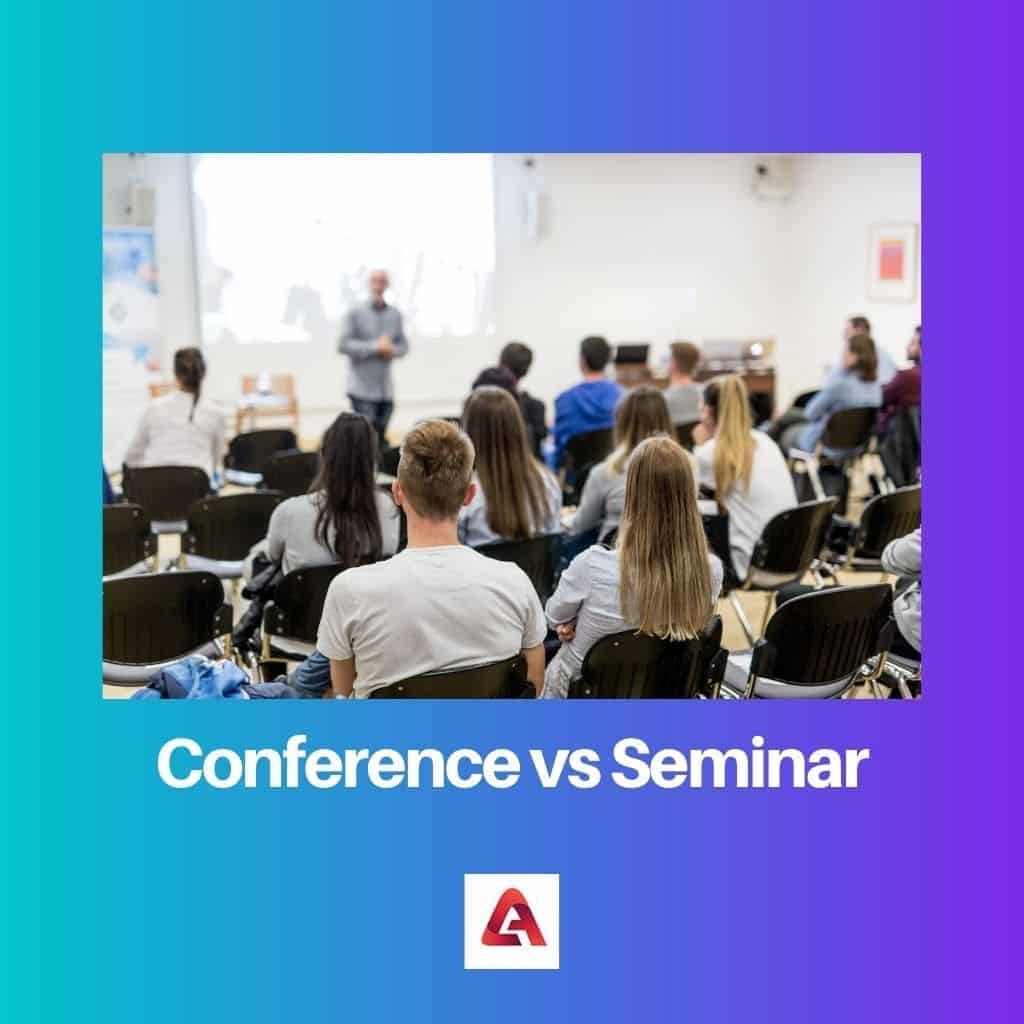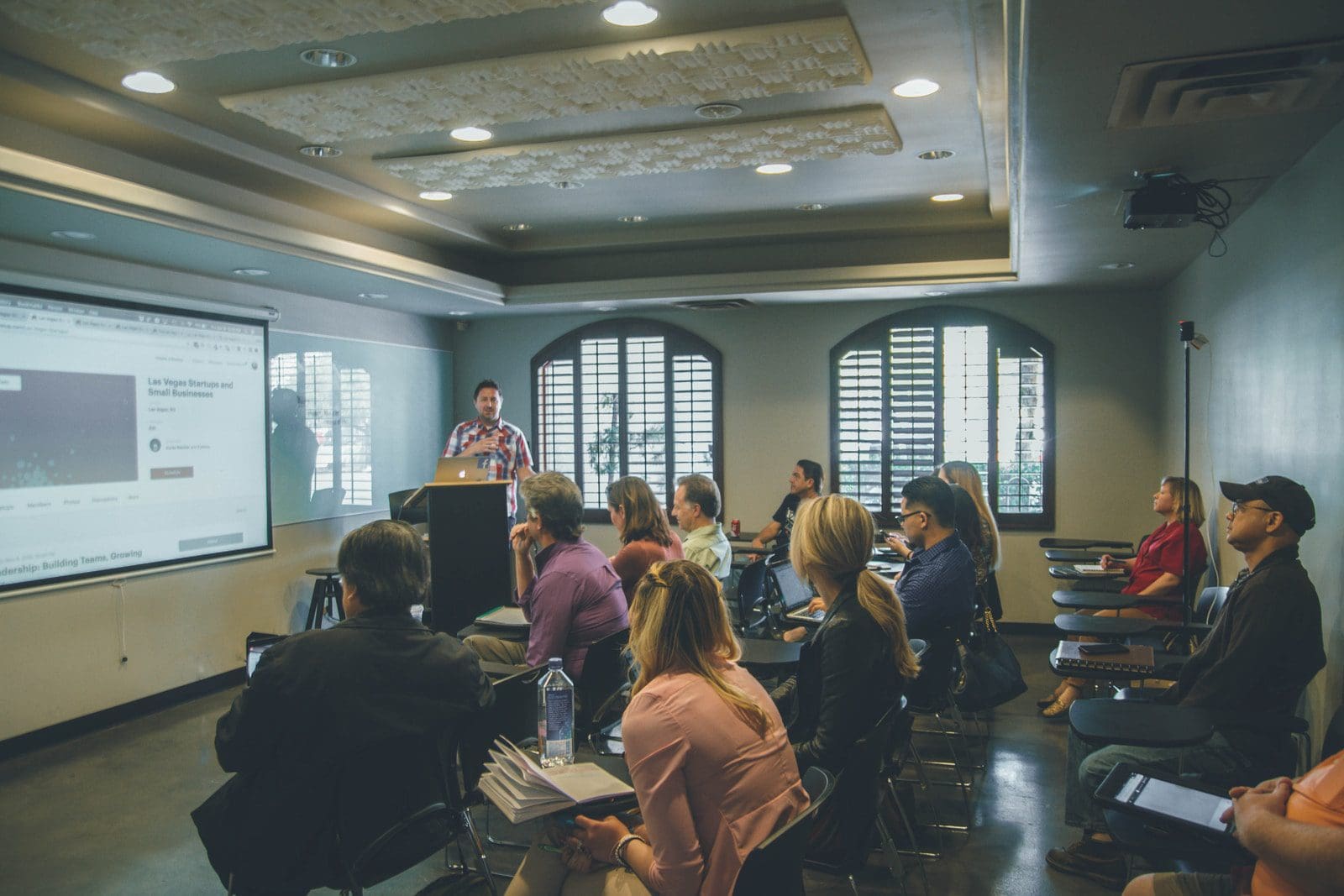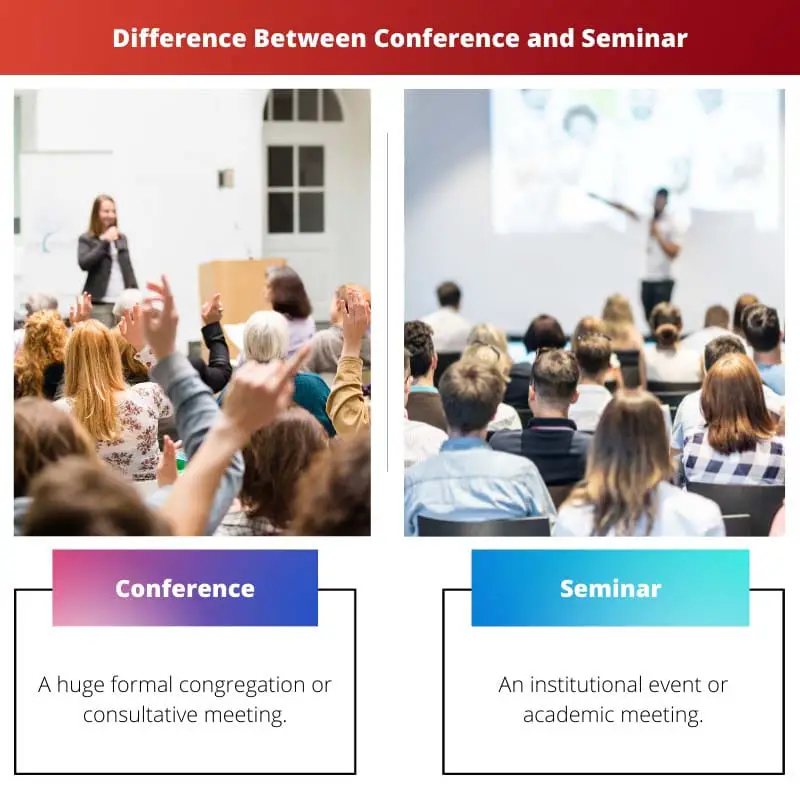A conference is a large-scale event that typically spans multiple days, featuring a diverse range of presentations, workshops, and networking opportunities. It attracts professionals and experts from various fields to share and discuss research, trends, and innovations. In contrast, a seminar is a more focused and concise gathering, often held for a shorter duration, where a specific topic is explored in-depth through presentations and interactive discussions among a smaller audience.
Key Takeaways
- A conference is a large-scale event that brings together professionals or experts in a specific field to share knowledge, discuss ideas, and network, featuring multiple sessions and speakers.
- A seminar is a smaller, more focused event, involving a single speaker or a small panel, intended to teach, inform, or discuss a specific topic in-depth.
- Conferences are large gatherings with multiple sessions, while seminars are smaller and more focused on a single subject or theme.
Conference vs Seminar
The difference between a Conference and a seminar is that a conference is a consultative forum where people gather to discuss issues of mutual interest and try to find a solution. A seminar is an academic forum that helps the students gain knowledge and guides them in their subject matters.

A Conference is a formal congregation where people talk about specific topics.
In a conference, people exchange visionary ideas and current information.
A Seminar is an academic congregation where attendees are bestowed with knowledge, guidance or training concerning the subject matter.
There could be several goals or just one behind a seminar.
Comparison Table
| Feature | Conference | Seminar |
|---|---|---|
| Size | Larger gathering (hundreds to thousands) | Smaller group (dozens to hundreds) |
| Focus | Broad range of topics within a field | Deep dive into a specific topic |
| Duration | Multiple days (usually 2-3) | Shorter duration (a few hours to a day) |
| Format | Presentations, panel discussions, workshops, networking events | Lectures, interactive discussions, Q&A sessions |
| Goal | Share knowledge, exchange ideas, network with colleagues | Gain in-depth knowledge and skills on a specific subject |
| Interaction | Focus on presentations with some audience participation | More interactive with opportunities for discussion and questions |
What is Conference?
Types of Conferences
Conferences can be categorized into different types based on their purpose, audience, and format:
- Academic Conferences: These conferences focus on scholarly research and academic exchange. They often feature presentations of research papers, panel discussions, and keynote speeches by prominent scholars in the field.
- Business Conferences: Business conferences bring together professionals from various industries to discuss market trends, business strategies, networking opportunities, and industry-specific challenges. They may include workshops, seminars, and exhibitions.
- Professional Conferences: Professional conferences cater to specific professions or occupations, such as healthcare, engineering, law, or finance. They provide a platform for professionals to share best practices, explore new developments in their field, and earn continuing education credits.
- Trade Conferences: Trade conferences focus on specific trades or industries, such as technology, manufacturing, or agriculture. They offer opportunities for businesses to showcase their products and services, explore partnerships, and stay updated on industry trends.
- Virtual Conferences: With advancements in technology, virtual conferences have become increasingly popular. These conferences are conducted entirely online, allowing participants from around the world to attend remotely. Virtual conferences typically include webinars, virtual networking sessions, and online exhibitions.
Key Components of a Conference
- Call for Papers: Many academic and research conferences issue a call for papers, inviting scholars to submit abstracts or full papers for presentation at the conference. These submissions undergo peer review before acceptance.
- Program Agenda: A conference program agenda outlines the schedule of events, including keynote speeches, presentations, panel discussions, workshops, and social activities. It helps participants plan their attendance and navigate the conference.
- Presentations: Presentations are a central component of conferences, where speakers share their research findings, insights, or experiences with the audience. Presentations may be oral, poster presentations, or interactive sessions.
- Networking Opportunities: Conferences provide valuable networking opportunities for participants to connect with colleagues, experts, potential collaborators, and industry professionals. Networking sessions, social events, and exhibition areas facilitate interactions and relationship-building.
- Exhibitions and Sponsorship: Many conferences feature exhibitions where organizations, companies, and sponsors showcase their products, services, and initiatives related to the conference theme. Exhibitors and sponsors support the conference financially and gain visibility among attendees.
Benefits of Attending Conferences
- Knowledge Sharing: Conferences offer a platform for sharing knowledge, research findings, and best practices within a specific field or industry.
- Networking: Conferences facilitate networking opportunities, allowing participants to establish connections, collaborate on projects, and explore career opportunities.
- Professional Development: Attending conferences can contribute to professional development by providing access to workshops, seminars, and discussions on relevant topics.
- Visibility and Recognition: Presenting research or speaking at conferences enhances visibility and recognition within the academic or professional community.
- Stay Updated: Conferences provide insights into the latest trends, developments, and innovations in various fields, helping participants stay updated on industry advancements.

What is Seminar?
Purpose of Seminars
1. Knowledge Dissemination
Seminars are organized to disseminate information and knowledge on a particular subject. Presenters, often experts in their field, share insights and findings with the audience, promoting a deeper understanding of the topic.
2. Skill Development
Attendees have the opportunity to enhance their skills, whether in research methodologies, presentation techniques, or critical thinking. Workshops and interactive sessions are common components that contribute to skill development.
Components of a Seminar
1. Presentations
Presentations are the core element of a seminar. Speakers utilize various media, such as slideshows or demonstrations, to convey their ideas effectively. The content can range from research findings to innovative concepts.
2. Question and Answer Sessions
These sessions provide an opportunity for the audience to seek clarification, express opinions, and engage in discussions with the presenters. Q&A sessions promote active participation and a deeper understanding of the topic.
3. Panel Discussions
Panel discussions involve a group of experts sharing their perspectives on a common theme. This format encourages diverse viewpoints and allows for a comprehensive exploration of the subject.
Types of Seminars
1. Academic Seminars
These seminars focus on academic research and are commonly organized within educational institutions. Scholars and researchers present their work to peers, fostering an environment of intellectual growth.
2. Professional Seminars
Professional seminars are industry-specific events where practitioners and experts discuss current trends, challenges, and innovations within a particular field. These seminars contribute to continuous professional development.
Planning and Execution
1. Topic Selection
Choosing a relevant and engaging topic is crucial. The selected theme should align with the interests of the target audience and contribute to the overall objectives of the seminar.
2. Invitations and Participants
Organizers must carefully invite speakers, panelists, and attendees. Ensuring a diverse and knowledgeable group of participants enhances the overall quality of the seminar.
3. Logistics and Venue
Proper logistical planning, including venue selection, audio-visual arrangements, and accommodation, is essential for the smooth execution of a seminar.

Main Differences Between Conference and Seminar
- Size and Scope:
- Conferences are generally larger events that bring together a larger number of participants, often from diverse backgrounds and locations.
- Seminars are typically smaller in scale and focus on a specific topic, allowing for more in-depth discussions.
- Format and Structure:
- Conferences often consist of multiple concurrent sessions, with various speakers presenting their research or ideas in parallel tracks.
- Seminars usually have a single session or a series of closely related sessions, allowing for a more focused exploration of the chosen subject.
- Audience Interaction:
- Conferences may have limited opportunities for audience interaction, especially in larger sessions, and Q&A sessions may be brief.
- Seminars emphasize active participation and engagement, with more time allocated for questions, discussions, and interaction between participants and speakers.
- Duration:
- Conferences typically span over multiple days, accommodating a wide range of topics and presentations.
- Seminars are often shorter in duration, sometimes lasting only a day or a few hours, with a concentrated focus on a specific subject.
- Purpose:
- Conferences aim to provide a platform for the dissemination of research, networking, and the exchange of ideas on a broader scale.
- Seminars are designed to facilitate in-depth discussions and learning on a particular topic, often with a goal of enhancing participants’ knowledge and skills in a specific area.
- Organizational Structure:
- Conferences are usually organized by committees and involve multiple stakeholders, including sponsors and exhibitors.
- Seminars can be organized by academic institutions, professional organizations, or companies, with a more centralized and focused planning structure.
- Registration and Attendance:
- Conferences attract a larger number of participants, and registration fees may be higher to cover the costs of organizing a larger-scale event.
- Seminars often have lower registration fees and may have limited attendance, allowing for a more intimate setting.
- Presentation Style:
- Conference presentations are often shorter, allowing for a broader range of topics to be covered during the event.
- Seminar presentations are generally more detailed and may include in-depth analyses, case studies, or hands-on activities.
- Networking Opportunities:
- Conferences offer extensive networking opportunities, with social events, poster sessions, and larger exhibit areas.
- Seminars may have more focused networking sessions, often centered around the specific theme of the seminar.






